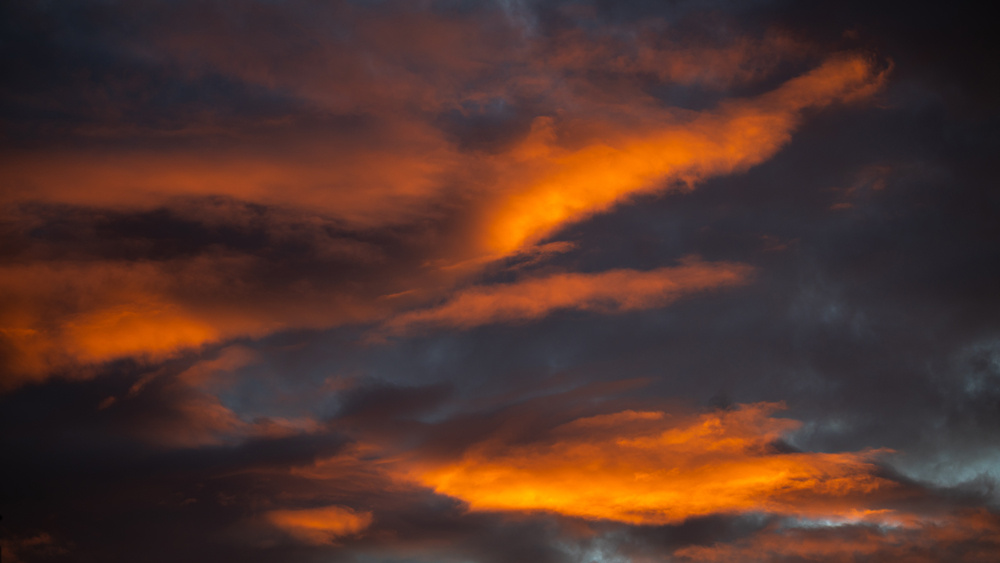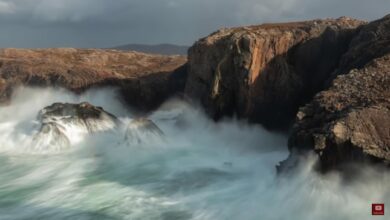The Great Debate: Why Gear Doesn’t Make You a Better Photographer

In the modern world of photography, it’s easy to be lured into the belief that owning the latest and most expensive gear will automatically elevate your skills as a photographer. However, the truth is far from this misconception. While high-quality equipment can undoubtedly enhance certain aspects of your photography, it is essential to understand that gear alone does not make you a better photographer. In this article, let’s delve into the reasons why true photographic prowess lies in the photographer’s skill, creativity, and vision rather than the equipment they possess.
Vision and Creativity Over Equipment

One of the most significant aspects of landscape photography is the photographer’s vision and creative expression. While a high-end camera and lens can offer technical advantages, they are merely tools that serve the artist’s creative intentions. Owning top-of-the-line gear won’t help if you lack a compelling vision for your photographs. The most iconic landscape images are born from us photographer’s ability to see and capture unique compositions, lighting, and moments that evoke emotions and tell stories.
Vision and creativity are the cornerstones of great landscape photography, and they transcend the limitations of equipment. While modern cameras and lenses have advanced capabilities, it is the photographer’s unique vision and creative approach that truly make an image stand out. Let’s delve deeper into why vision and creativity should be prioritized over gear:
- Personal Expression: Photography is an art form, and like any art, it is a medium for personal expression. Every photographer has a distinct way of seeing the world, and their individual vision shapes their photographs. No two photographers will capture the same landscape in precisely the same way. Investing time in understanding one’s artistic style and honing a personal vision allows us as photographers to create images that reflect our emotions, experiences, and perspectives.
- Storytelling: Landscape photography is not just about pretty pictures; it can be a powerful storytelling tool. A skilled photographer can use their creativity to weave narratives within their landscapes, guiding the viewer through a visual journey. Whether it’s capturing the majesty of a mountain range, the serenity of a secluded beach, or the nostalgia of an abandoned structure, the ability to tell stories through images is an essential skill that relies on the photographer’s vision.
- Seeing the Unseen: An experienced landscape photographer has the ability to see beauty and potential in seemingly ordinary scenes. They can transform mundane or overlooked elements into mesmerizing photographs through creative framing, unique perspectives, and unconventional compositions. This ability to find beauty in unexpected places sets apart photographers who rely on vision from those who solely depend on advanced gear.
- Adapting to Constraints: In the world of photography, not every situation allows for the luxury of high-end equipment. When presented with challenges like adverse weather, limited time, or constrained mobility, it is the photographer’s vision and creativity that enable them to adapt and make the best of the circumstances. An imaginative photographer can turn obstacles into opportunities, crafting remarkable images despite the odds.
- Post-Processing and Editing: While modern cameras offer high-resolution images and impressive dynamic range, post-processing and editing play a crucial role in the final result. An artist’s creative vision is often manifested during the post-processing stage, where they can enhance colors, adjust tonalities, and fine-tune the image to align with their artistic intent. Skillful editing requires an understanding of software and techniques, but more importantly, it requires a clear vision of the final image.
- Embracing Imperfections: Vision and creativity allow photographers to embrace imperfections and turn them into strengths. Not every photograph needs to be technically flawless. Some of the most captivating landscape images have a degree of imperfection that adds character and emotion. A photographer who prioritizes vision over equipment will be more open to experimenting with various styles, embracing happy accidents, and embracing the uniqueness of each shot.
- Lasting Impact: Photographs that leave a lasting impact on viewers are often those that evoke emotions and create a connection. These images go beyond technical excellence and gear specifications. They touch the viewer’s soul and leave them contemplating the beauty of the world. It is the photographer’s vision, creative insight, and ability to communicate through their photographs that make this profound impact.

Knowledge and Technique Matter
A camera is only as powerful as the person wielding it. A landscape photographer must understand the principles of photography, such as exposure, composition, and lighting to create impactful images. In-depth knowledge of these fundamental techniques allows the photographer to use any camera, whether it’s a high-end DSLR or a smartphone, to its full potential. Understanding how to manipulate settings like aperture, shutter speed, and ISO is essential in achieving the desired artistic effects, regardless of the gear’s sophistication.
- Mastering Exposure: Understanding exposure is fundamental in any genre of photography, and landscape photography is no exception. Properly exposing an image involves balancing the three main components: aperture, shutter speed, and ISO. Knowledge of these settings allows photographers to control the amount of light entering the camera, resulting in well-lit and well-balanced images, even in challenging lighting conditions like high contrast scenes or low light situations.
- Achieving Sharpness: Landscape images often require high levels of sharpness from the foreground to the background. Knowing how to use the right aperture settings for depth of field and focal point selection is crucial for ensuring that all elements within the frame are sharp and in focus. Techniques like hyperfocal distance focusing enable photographers to maximize the depth of field, leading to images with exceptional sharpness and clarity.
- Composition Techniques: Composition is an art form in itself, and in landscape photography, it can make or break an image. Understanding and employing composition techniques such as the rule of thirds, leading lines, framing, and symmetry help create visually appealing and balanced photographs. A skilled photographer knows how to arrange elements within the frame to guide the viewer’s eye and tell a compelling visual story.
- Utilizing Filters: Landscape photographers often use a variety of filters to control light and enhance specific aspects of their images. Graduated neutral density (ND) filters help balance the exposure between the sky and the landscape, while polarizing filters reduce glare and enhance colors. Knowing when and how to use these filters is essential for achieving professional-looking landscape photographs in-camera, reducing the need for extensive post-processing.
- Handling Dynamic Range: Many landscape scenes present a wide range of light and shadow, making it challenging to capture all the details in a single exposure. Techniques such as exposure bracketing and high dynamic range (HDR) processing allow photographers to merge multiple exposures into one, resulting in a final image with extended dynamic range and rich details throughout.
- Understanding Light: Light is the foundation of photography, and mastering its qualities and behavior is critical for landscape photographers. Knowledge of how different lighting conditions affect a scene – whether it’s the soft light of sunrise and sunset or the harsh light of midday – enables photographers to plan and time their shoots effectively to capture the desired mood and atmosphere.
- Post-Processing: While capturing a compelling image in-camera is crucial, post-processing also plays a significant role in enhancing the final result. Knowledge of editing software and techniques allows photographers to fine-tune their images, adjusting colors, contrast, and sharpness to achieve the desired look while maintaining a natural and realistic appearance.
- Technical Problem-Solving: Landscape photography often involves challenging situations, such as shooting in adverse weather, low light, or challenging terrain. Knowing how to troubleshoot technical issues and adapt to changing conditions is essential to overcome obstacles and capture the best possible shot.
 Composition Is King
Composition Is King
The heart of a compelling landscape photograph lies in its composition. The ability to compose a scene effectively is not dependent on gear but rather on the photographer’s artistic eye and creativity. A skilled photographer can craft striking compositions with any camera by thoughtfully arranging elements within the frame, paying attention to leading lines, symmetry, balance, and framing. These composition techniques are universal and applicable across all levels of gear.
- Creating Visual Harmony: A well-composed landscape photograph captivates viewers and draws them into the scene. Effective composition helps establish a sense of visual harmony and balance in the image. By arranging elements thoughtfully, photographers can lead the viewer’s eye through the photograph and create a natural flow that holds their attention.
- Guiding the Viewer: Composition allows photographers to control how the viewer perceives and interprets the image. Strategic placement of leading lines, diagonals, and framing elements can direct the viewer’s gaze toward the main subject or the focal point of the photograph. It helps convey the photographer’s intended message and emotions to the audience.
- Emphasizing the Main Subject: In landscape photography, there is often a central subject or point of interest, whether it’s a majestic mountain peak, a solitary tree, or a picturesque waterfall. Effective composition highlights this subject and makes it the star of the photograph. By positioning the main subject thoughtfully and using visual elements to support it, the photographer ensures that the viewer’s attention is drawn to the intended focal point.
- Balancing Elements: Landscape photographers deal with a variety of elements within a scene, such as mountains, rivers, trees, and skies. A balanced composition ensures that no single element overwhelms the others. It involves distributing visual weight throughout the frame, so no area feels too crowded or empty, resulting in a harmonious and pleasing photograph.
- Rule of Thirds: The rule of thirds is a fundamental compositional guideline that divides the frame into a 3×3 grid. Placing key elements along the grid lines or at their intersections often leads to aesthetically pleasing and well-balanced compositions. Although it is a simple principle, it can significantly enhance the visual impact of a landscape photograph.
- Framing and Depth: Composition techniques like framing can add depth and dimension to an image. By using natural elements, such as trees or rock formations, to frame the main subject, photographers create a sense of depth, drawing the viewer’s eye into the scene. This technique adds a layer of interest and immersion to the photograph.
- Negative Space: Composition in landscape photography also involves recognizing the power of negative space – the areas of the image that lack prominent subjects. Intentional use of negative space can evoke a sense of tranquility, serenity, or vastness, allowing the viewer to appreciate the simplicity and beauty of the landscape.
- Simplicity and Minimization: Sometimes, less is more. A cluttered composition can distract from the main subject or the overall message of the photograph. Skilled landscape photographers understand the importance of simplifying the scene and minimizing distractions to create a powerful and focused image.

The Role of Light
Light is the soul of photography, and mastering its interplay with the landscape is crucial for producing captivating images. While advanced camera sensors can handle challenging lighting situations, understanding and harnessing the light’s qualities is a skill that comes from experience and observation. Being able to recognize the right time of day for the desired mood, or making the best of adverse weather conditions, separates skilled photographers from those who rely solely on equipment.
- Golden Hours: The “golden hours” are the periods shortly after sunrise and before sunset when the sun is low in the sky, casting a warm and soft light across the landscape. During these times, the light is more diffused due to the longer path through the atmosphere, resulting in gentle shadows and vibrant colors. Golden hours offer ideal conditions for capturing captivating landscapes with a magical and ethereal quality.
- Dramatic Light: While golden hours offer soft and warm light, other times of the day can present dramatic and intense lighting conditions. For instance, shooting during the blue hour, which occurs before sunrise and after sunset, can create a serene and mysterious atmosphere with its cool tones. Alternatively, shooting under dramatic storm clouds can add a sense of tension and power to the landscape.
- Weather and Atmosphere: Different weather conditions bring unique qualities to the landscape. On overcast days, the soft and diffused light eliminates harsh shadows, allowing for even lighting and bringing out vibrant colors. Rainy or misty weather adds an element of moodiness and atmosphere to the scene. Understanding how to work with different weather conditions allows photographers to adapt and capture diverse landscapes.
- Backlighting and Silhouettes: Creative use of backlighting can add a touch of magic to landscape photographs. Shooting directly into the light source can create striking silhouettes, emphasizing the shapes and contours of subjects against the bright background. Backlighting also adds a glow to elements like leaves or petals, making them appear translucent and ethereal.
- Shadows and Texture: The direction and intensity of light play a significant role in highlighting textures in the landscape. Side lighting, for example, can accentuate the details of rugged terrains, tree bark, or sand dunes, adding depth and dimension to the image. Shadows cast by light also contribute to the overall composition, creating patterns and leading lines that enhance the visual appeal.
- Time of Day: The time of day significantly impacts the quality of light and, consequently, the overall feel of a landscape photograph. Midday light tends to be harsh and unflattering, casting strong shadows that can be challenging to manage. Skilled photographers often avoid shooting during this time and instead opt for early morning or late afternoon when the sun is lower in the sky.
- Capturing Transient Moments: The fleeting moments of light can transform a landscape in an instant. Rays of sunlight breaking through clouds, the warm glow of the setting sun on the horizon, or the last light of day illuminating a mountain peak – these transient moments require attentiveness and swift action to capture effectively.

Emotional Connection
Great landscape photography evokes emotions, connects with viewers, and transports them to the scene captured by the photographer. Achieving this emotional connection is not achieved through gear but rather through the photographer’s ability to convey their own emotions and experiences into the images they create. Whether it’s a sense of wonder, tranquility, or awe, it is the photographer’s artistic expression that creates this bridge between the viewer and the photograph.
- Humanizing Nature: Landscape photography allows viewers to experience the beauty and grandeur of nature vicariously through the eyes of the photographer. An emotional connection with the landscape humanizes nature, making it relatable and accessible to viewers, regardless of their geographical location. This connection fosters a sense of empathy and care for the environment, inspiring viewers to appreciate and protect the natural world.
- Eliciting Emotions: Emotional connection in landscape photography can evoke a wide range of emotions in viewers, from awe and wonder to serenity and nostalgia. The photograph becomes a conduit for shared experiences, memories, and feelings, resonating with individuals on a personal level. Emotionally impactful images have the power to stir the soul and leave a lasting impression on the viewer’s mind.
- Telling a Story: Landscape photographs with emotional depth often tell a story beyond the visual. The emotional connection can convey a sense of place, the passing of time, or the essence of a moment. Through skillful composition and lighting, photographers can transport viewers into the scene, allowing them to immerse themselves in the story being told by the image.
- Expressing the Photographer’s Perspective: The emotional connection in landscape photography stems from the photographer’s own passion, love, and fascination with the natural world. By sharing their unique perspective and emotional response to the landscape, photographers invite viewers to experience the scene from their point of view, forging a sense of intimacy and shared understanding.
- Fostering Contemplation: Emotional landscape photographs encourage viewers to contemplate the scene and explore its nuances. The image becomes more than just a visual representation; it becomes a source of introspection and reflection. This meditative quality allows viewers to form a deeper connection with the photograph, as they find new meaning and emotions in each viewing.
- Conveying Atmosphere: Through the use of light, color, and composition, photographers can capture the atmosphere and mood of a specific moment in time. Emotionally charged photographs can portray tranquility, drama, or melancholy, allowing viewers to connect with the essence of the scene and experience the emotions it evokes.
- Inspiration and Resonance: Emotional connection in landscape photography has the power to inspire and resonate with viewers on a personal level. It can encourage people to seek solace in nature, find beauty in everyday surroundings, or appreciate the simple moments that often go unnoticed. Emotional resonance motivates viewers to engage with the photograph, transforming it from a fleeting image into a lasting memory.

Creativity in Constraints
Limitations in gear can sometimes foster creativity and ingenuity. Working with a less sophisticated camera or lens encourages photographers to think outside the box and find innovative ways to capture stunning landscapes. Embracing limitations can lead to unique perspectives and a more personal touch in your work, which is often lost when relying heavily on gear alone.
- Inspiring Innovation: Constraints force photographers to look beyond the obvious and discover unconventional approaches to their craft. Limited equipment or difficult shooting conditions encourage creative problem-solving, leading to the development of unique techniques and perspectives that may not have been explored otherwise. Embracing constraints can inspire a photographer to experiment and discover new ways to tell visual stories.
- Focus on Essentials: When working with limited gear or time constraints, photographers are compelled to focus on the essential elements of a scene. This distilled approach often results in images that are more impactful and emotionally resonant, as extraneous distractions are eliminated. Constraints force photographers to simplify their compositions, highlighting the beauty and significance of the main subject.
- Embracing Minimalism: In landscape photography, less can be more. Embracing constraints can lead to a minimalist approach, where photographers intentionally leave out non-essential elements, creating powerful and evocative images that emphasize space, simplicity, and tranquility. Minimalism allows viewers to focus on the emotional impact of the photograph without distractions.
- Enhancing Creativity: Constraints push photographers to think creatively and develop their artistic voice. Working within limitations encourages them to see possibilities in unexpected places, look for alternative perspectives, and transform seemingly mundane scenes into extraordinary images. This enhanced creativity can lead to the development of a unique photographic style.
- Personal Touch: The creative solutions derived from constraints often add a personal touch to the photographs. Photographers who embrace limitations inject their personality and artistic flair into the images, making them more distinct and memorable. This personal touch sets their work apart from others and resonates with viewers on a deeper level.
- Making the Most of Opportunities: In landscape photography, opportunities may be fleeting, and conditions may change rapidly. Creativity in constraints enables photographers to make the most of the available opportunities. They learn to adapt quickly to changing situations, finding ways to capture stunning images even in challenging circumstances.
- Honing Skills: Working within constraints can be a valuable learning experience. It encourages photographers to become more proficient with the gear they have and to improve their technical skills. By mastering the fundamentals, photographers can achieve remarkable results regardless of the limitations they encounter.
- Spontaneity and Serendipity: Constraints often lead to spontaneous and serendipitous moments. Photographers might stumble upon unexpected scenes or lighting conditions that they wouldn’t have planned for under normal circumstances. These unplanned encounters can result in some of the most extraordinary and surprising photographs.

Mindfulness and Patience
Landscape photography often requires patience and mindfulness to wait for the perfect moment to capture the desired shot. It’s about being in tune with the environment, observing subtle changes in lighting and weather, and being ready to seize the right opportunity. These traits are cultivated through practice, experience, and passion for the art, not through the gear you carry.
- Connecting with the Environment: Mindfulness in landscape photography involves being present in the moment and fully connected with the environment. When photographers practice mindfulness, they can immerse themselves in the landscape, appreciate its beauty, and gain a deeper understanding of its rhythms and characteristics. This heightened awareness allows them to capture the essence of the scene and the atmosphere more effectively.
- Observing Light and Weather: Mindfulness enables photographers to observe and interpret the ever-changing light and weather conditions. By paying close attention to how light interacts with the landscape, they can anticipate when the conditions are most favorable for capturing a stunning photograph. Being mindful of weather patterns also allows photographers to plan ahead for potential dramatic skies or unique atmospheric effects.
- Seizing the Moment: Landscape photography often involves capturing transient moments of beauty. Whether it’s the fleeting light during sunrise or the passing of storm clouds during sunset, being mindful allows photographers to recognize these precious moments and act swiftly to seize the opportunity. Patience comes into play as they may need to wait for hours or even days to capture that elusive and perfect moment.
- Attention to Detail: Mindfulness encourages photographers to pay attention to the smallest of details within the landscape. By carefully observing elements like patterns, textures, and subtle changes in lighting, they can create more nuanced and captivating images. Mindful photographers are more likely to notice hidden gems and unique perspectives that others may overlook.
- Composing Thoughtfully: Mindfulness aids in the process of composing a photograph thoughtfully. Photographers who are fully present and mindful of their surroundings can make more deliberate decisions about composition, framing, and focal points. This results in more purposeful and impactful images.
- Managing Expectations: Landscape photography often requires a great deal of patience. The desired conditions or lighting may not always materialize immediately. Mindful photographers manage their expectations and remain patient in the face of uncertainty. They understand that capturing the perfect shot may require multiple visits to a location and are willing to invest the time needed to achieve their vision.
- Embracing the Unpredictable: Nature is full of surprises, and landscape photographers must adapt to the unexpected. Being mindful allows them to embrace the unpredictable nature of the environment and find beauty in the unexpected. Whether it’s sudden changes in weather or encountering wildlife unexpectedly, a mindful photographer can turn unpredictability into opportunity.

Conclusion
In conclusion, gear undoubtedly plays a role in landscape photography, but it should never be the primary focus or the sole measure of a photographer’s skill. The true essence of landscape photography lies in the photographer’s vision, creativity, knowledge, and ability to connect emotionally with the audience. Mastery of composition, light, and technique are what sets outstanding photographers apart from the crowd, regardless of the equipment they use.
Instead of chasing the latest gear trends, aspiring landscape photographers should invest in honing their craft, learning from experienced photographers, and spending more time in the field to develop their artistic voice. After all, it is the passion, dedication, and the pursuit of excellence that ultimately defines a photographer’s journey and leads to creating breathtaking landscape photographs that stand the test of time.
Am I right in this view in your opinion, or have I got it totally wrong? Let me know your thoughts in the comments below and let’s chat.




